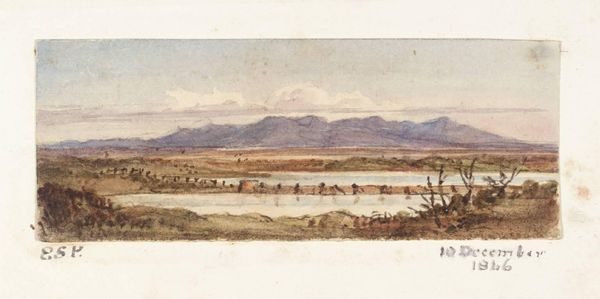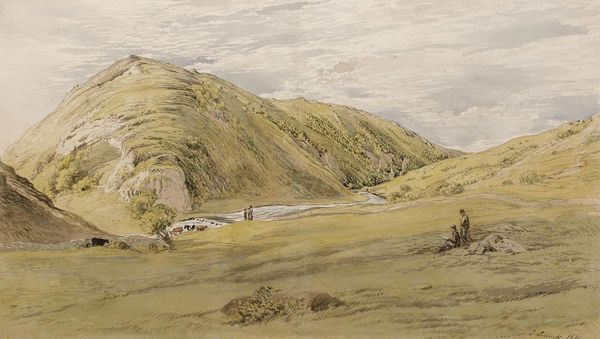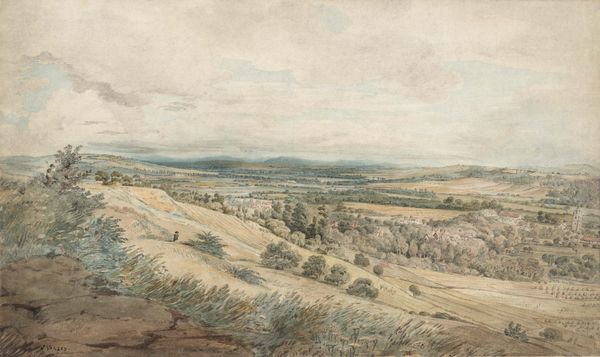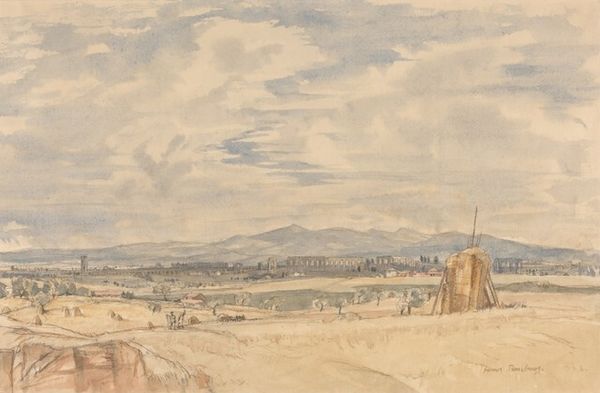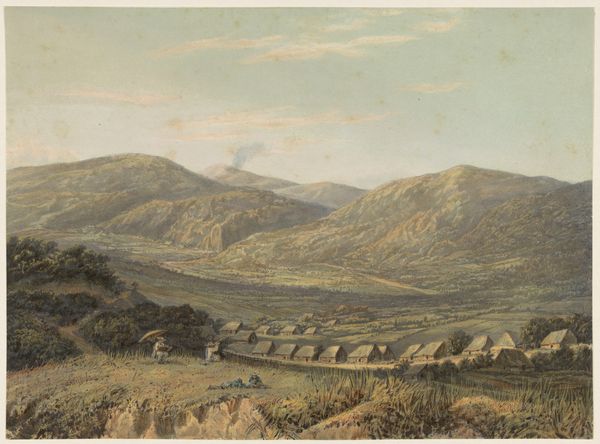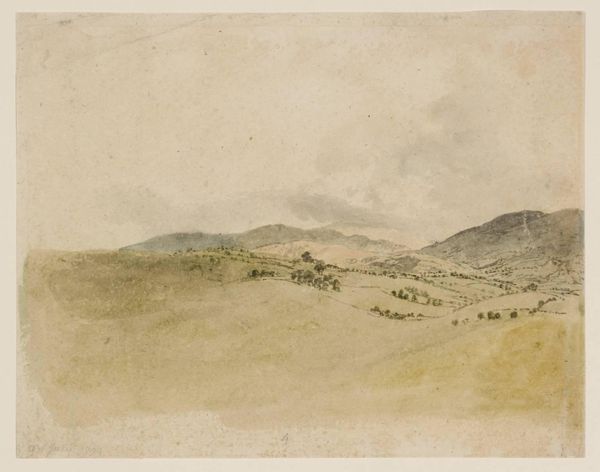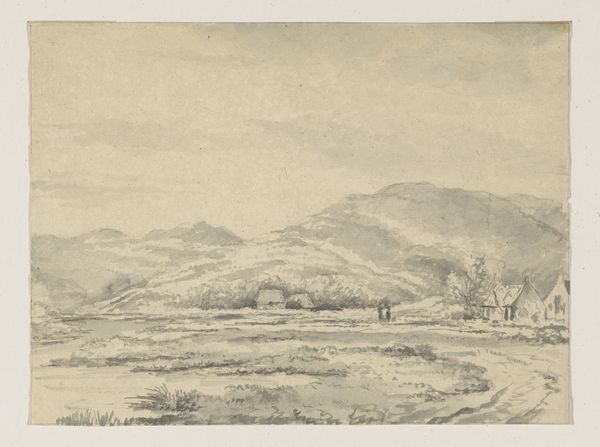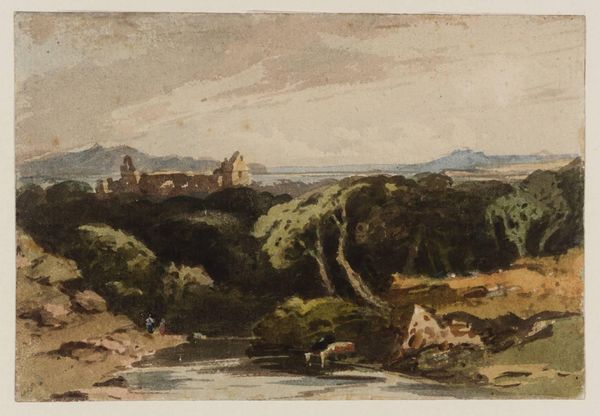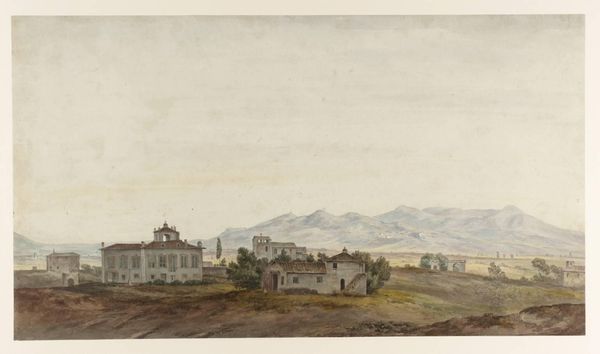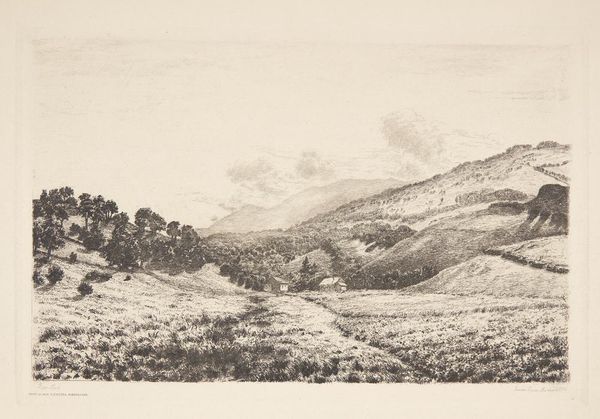
painting, plein-air, watercolor
#
painting
#
impressionism
#
plein-air
#
landscape
#
river
#
charcoal drawing
#
oil painting
#
watercolor
#
watercolor
Dimensions: height 239 mm, width 416 mm
Copyright: Rijks Museum: Open Domain
Editor: Welcome. Before us hangs Henri-Joseph Harpignies’ “Landschap met een rivierdal in Zuid Frankrijk,” painted in 1861, housed here at the Rijksmuseum. Curator: My first impression is one of sublime tranquility, largely achieved through a mastery of tonal variation and composition. The muted palette evokes a calm stillness, a pause in time. Editor: It’s interesting you mention stillness. What strikes me is the sense of labor embedded in this landscape. While rendered with delicate watercolors, we see hints of human presence modifying the landscape for agriculture and transportation, impacting its material reality. Curator: Indeed, the materiality of paint serves a key function, mediating the space. Harpignies uses layers of diluted pigments to construct depth and aerial perspective. The visible brushstrokes and delicate washes grant the scenery a light, airy quality. This isn’t mere topography; it's carefully composed atmosphere. Editor: I agree. Consider how the artist uses the watercolor medium itself—its inherent fluidity and translucence—to depict the shimmering river. The execution makes visible how resources of land, people and art materials form landscape's character. The act of painting becomes almost as central as the scene it represents. Curator: Quite. We can consider how Harpignies guides our eyes from the darker foreground to the lighter, blurred mountains on the horizon. He establishes an ideal aesthetic plane, relying on semiotic codes of pictorial composition to present a very deliberately "harmonious" scene. Editor: And perhaps that "harmony" obscures, intentionally or not, the continuous act of labor involved in shaping the South of France as we see it. From planting and building, a whole economy makes such beauty possible. Curator: That friction between artistic representation and social implications presents a rich lens through which to examine landscape painting in that time. It is a piece to which formalism offers a key, while materialism throws open the whole door to consider the world that produced such painting. Editor: Very well said. Considering all we've noticed together, I look at the painting with renewed awareness. Curator: I find myself equally compelled to re-evaluate its depths. Let's move on, shall we?
Comments
No comments
Be the first to comment and join the conversation on the ultimate creative platform.
